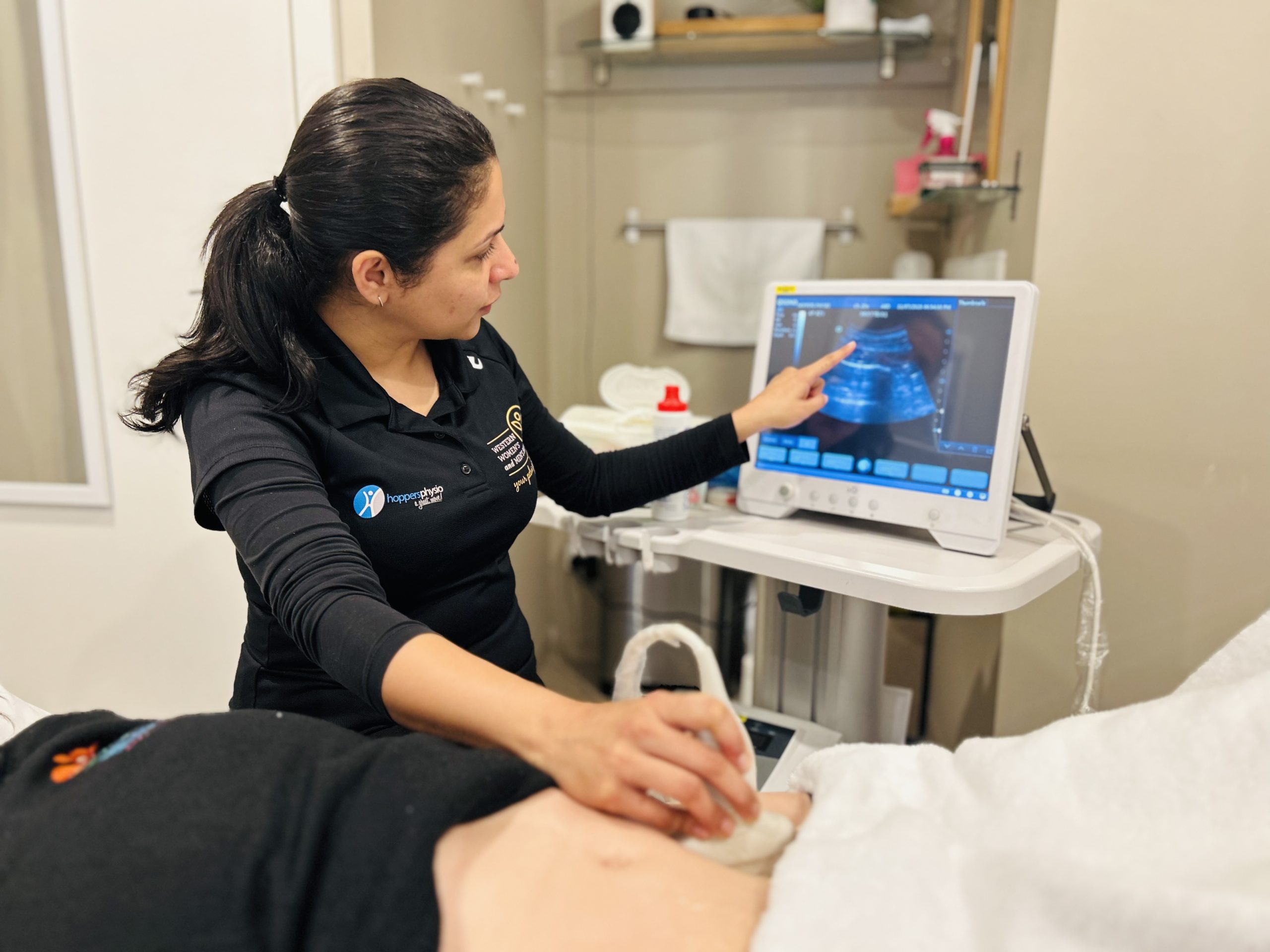
10 Dec Core Muscle Assessment with Ultrasound: A Women’s Health Physiotherapist’s Perspective
As women’s health physiotherapists, we are passionate about helping women optimize their core muscle function. One effective tool is the use of ultrasound imaging for core muscle assessment. In this post, I hope to give you a better insight into the process of core muscle assessment using an ultrasound machine, discuss what we look for during the assessment, highlight the benefits of visualizing the core, and emphasize the advantages of regular Pilates exercises/classes led by a women’s health physiotherapist.
Steps involved in the process of Core Muscle Assessment using Ultrasound:
- Positioning: You will be positioned comfortably, and ultrasound gel is applied to the skin over the targeted area.
- Probe placement: The physiotherapist then places the ultrasound probe on the skin, allowing for the penetration of sound waves and real-time visualization on the ultrasound monitor.
- Muscle Visualization: The deep core muscles, such as the transverse abdominis, pelvic floor muscles, and multifidus, are visualized and assessed for their activation and coordination.
- Functional Assessment: The patient performs specific movements or exercises while the ultrasound images are captured. Enabling the physiotherapist to observe muscle activation patterns and assess core muscle recruitment.
- Interpretation: The physiotherapist analyzes the ultrasound images to identify muscle imbalances, weaknesses, or any abnormalities in the core muscles.
What we look for in Core Muscle Ultrasound Assessment
During the assessment, we pay attention to the following aspects:
- Activation and Timing: We assess the timing and activation of the deep core muscles to determine if they engage effectively during functional movements.
- Thickness and Strength: We measure the thickness of the core muscles to evaluate their strength and identify any signs of atrophy or hypertrophy I.e., thinning or thickening of the muscle girth.
- Coordination: We observe the coordination between different core muscles to identify imbalances or compensatory patterns that may contribute to dysfunction or pain.
- Pelvic Floor Function: Ultrasound assessment allows us to evaluate the function of the pelvic floor muscles. Including their ability to contract and relax effectively.
Benefits of Visualizing the Core and Biofeedback Mechanism:
- Enhanced Treatment Planning: Visualizing the core muscles helps us develop targeted treatment plans. These are tailored to the individual needs of our clients, ensuring optimal outcomes.
- Real-Time Biofeedback: Ultrasound provides real-time visual feedback to the clients, promoting better awareness and understanding of core muscle activation patterns. This biofeedback mechanism facilitates improved recruitment and engagement of the core muscles.
- Progress Monitoring: Regular core muscle ultrasound assessments enable both the client and physio to monitor progress over time. Allowing necessary adjustments to be made to the treatment plan and recognising achievements.
Benefits of Regular Pilates Exercises/Classes with a Women’s Health Physiotherapist:
- Core Strength and Stability: Pilates exercises focus on building core strength, improving stability, and enhancing posture. All of which are crucial for overall health and well-being.
- Pelvic Floor Health: Pilates exercises often incorporate pelvic floor muscle activation and relaxation techniques, supporting optimal pelvic floor function.
- Pregnancy and Postpartum Support: Tailored Pilates exercises help alleviate discomfort and aid in recovery. Regular pilates can also strengthen the core and pelvic floor during pregnancy and after childbirth.
- Menopause and Beyond: Pilates can alleviate menopausal symptoms, improve bone density, and promote physical and mental well-being as women age.
Core muscle assessments using ultrasounds are a valuable tool in being able to visualise the core muscles. Combining this with regular participation in Pilates exercises and classes led by a women’s health physiotherapist offers substantial benefits at every stage of a woman’s life, including enhanced core strength, stability, and overall well-being.
Contact our Clinic on 9749 5110 and book an appointment with one of our Women’s Health Physio today to begin your journey towards a stronger core.
